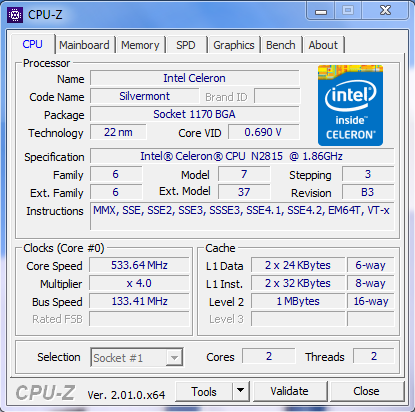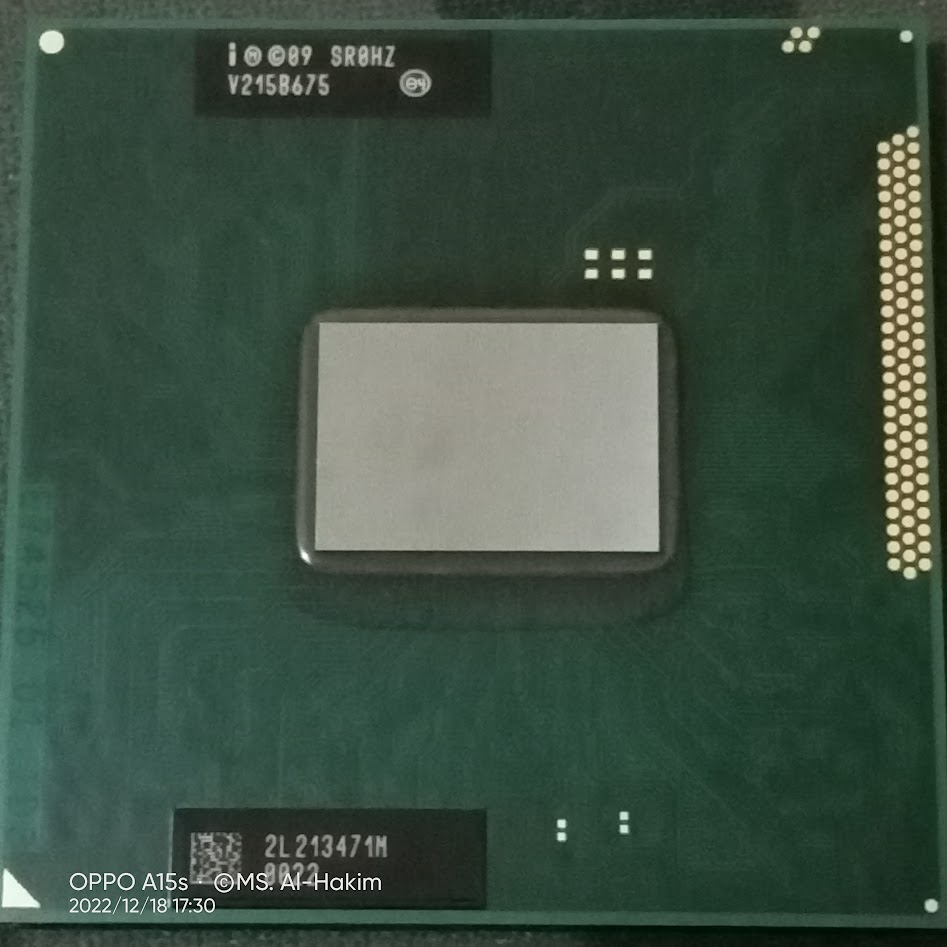Comparing: Intel Celeron N2815 vs Intel Celeron B815
In this comparison, we analyze two Processors: Intel Celeron N2815 and Intel Celeron B815, using synthetic benchmark tests to evaluate their overall performance. This side-by-side comparison helps users understand which hardware delivers better value, speed, and efficiency based on standardized testing. Whether you're building a new system or upgrading an existing one, this benchmark-driven evaluation offers valuable insights to guide your decision.

Intel Celeron N2815
| Type: | Processors |
|---|---|
| Brand: | Intel |
| Model: | Celeron N2815 |
Specification Comparison Table
| Specification | Intel Celeron N2815 | Intel Celeron B815 |
|---|---|---|
| Architecture | x86 | x86 |
| Technology | 22 nm | 32 nm |
| Clock | 1.86 GHz - 2.13 GHz | 1.6 GHz - - |
| Core/Thread | 2 / 2 | 2 / 2 |
| Segmen | Mobile | Mobile |
Submission Comparison Table
| Benchmark Software | Intel Celeron N2815 | Intel Celeron B815 |
|---|---|---|
| PiFast |
1min, 28sec, 750ms |
47sec, 490ms |
| SuperPi - 1M |
40sec, 513ms |
24sec, 976ms |
| wPrime - 32M |
47sec, 267ms |
41sec, 44ms |
About Hardware Intel Celeron N2815
Part of the Bay Trail-M family, the Intel Celeron N2815 is a power-efficient processor released in 2013 for entry-level laptops and light computing devices. It has 2 cores and 2 threads, with a base clock speed of 1.86 GHz, which can increase to 2.13 GHz thanks to Burst Performance technology.
Built with 22nm fabrication, the Celeron N2815 has a TDP of only 7.5W, making it an efficient choice in power consumption. The processor also comes with Intel HD Graphics (Bay Trail), which has a clock speed of 313 MHz and can go up to 756 MHz. This GPU is sufficient for basic tasks such as 720p video playback and desktop viewing, but is less capable for gaming or heavy graphics tasks.
In terms of performance, the N2815 is sufficient for running light operating systems such as Windows 7 or Linux with basic applications such as browsing and Office. However, its architectural limitations and low single-threaded performance make it less responsive in multitasking or running heavy applications.
Hardware Detail:
-
Saturday, 07 May 2022 13:02:41 | Update: 1 week ago
About Hardware Intel Celeron B815
Released in 2012 as part of the Sandy Bridge family, the Intel Celeron B815 is an entry-level mobile processor aimed at cost-effective laptops. It has 2 cores and 2 threads, with a clock speed of 1.6 GHz without Turbo Boost or Hyper-Threading support.
With 32nm fabrication, the Celeron B815 has a TDP of 35W, which is quite high for a processor of its class. For graphics, the processor uses Intel HD Graphics 2000, which has a base clock speed of 650 MHz and can increase up to 1 GHz in Boost mode.
In daily use, the Celeron B815's performance is sufficient for light tasks such as browsing, document processing, and 720p video playback. However, since it lacks technologies such as Hyper-Threading and Turbo Boost, its performance is quite limited for multitasking and heavy applications.
Hardware Detail:
Device: SAMSUNG 300E4Z
RAM: 4GB DDR3 Dual Channel
OS: Windows 7
Sunday, 27 November 2022 02:25:40 | Update: 1 week ago

